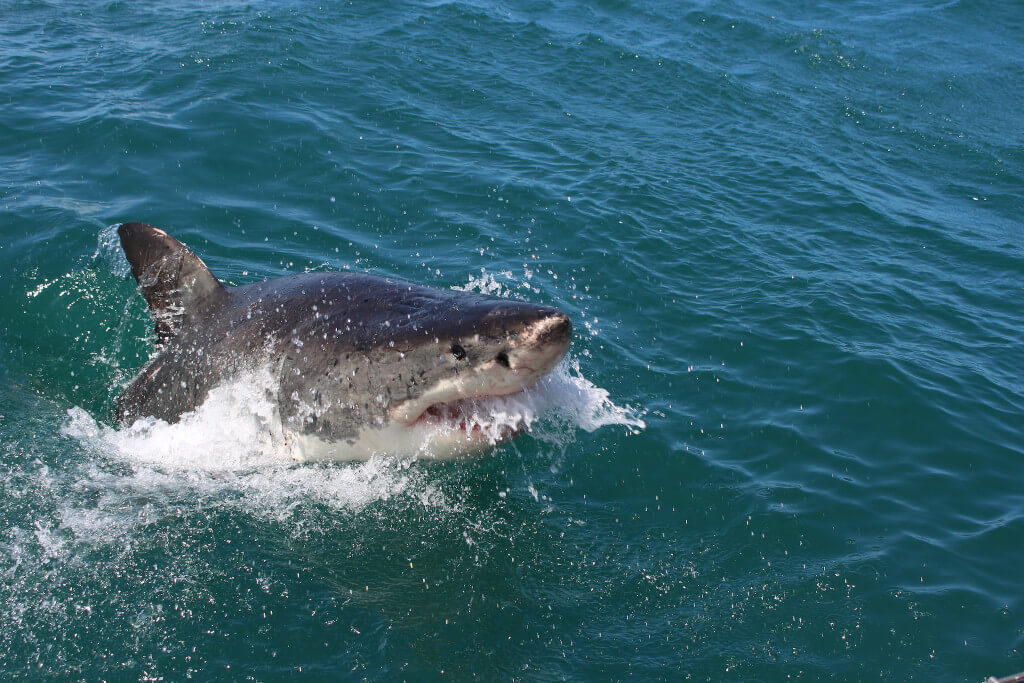The world of marine biology received a groundbreaking surprise on December 14, 2001, at the Henry Doorly Zoo in Nebraska. A female hammerhead shark, isolated from any male company, did something extraordinary – she gave birth to a pup. This event marked a pivotal moment in our understanding of shark reproduction, particularly because it was the first documented case of a hammerhead shark reproducing asexually.
Asexual reproduction in sharks is a rare phenomenon and, until this event, was not documented in hammerhead sharks. It’s a form of reproduction that does not involve the combination of genetic material from two parents. Instead, an offspring is produced by one individual, without the involvement of sperm and eggs as we traditionally understand it.
The case of the hammerhead shark at Henry Doorly Zoo was a revelation. Kept in isolation, without any male shark to mate with, the female hammerhead still managed to give birth. This event challenged the conventional understanding of shark reproduction, which predominantly involves sexual reproduction. Unfortunately, the miraculous birth was quickly overshadowed by a tragic turn. The newborn pup was killed by a stingray shortly after its birth. While the life of the pup was brief, its existence opened a whole new avenue of scientific inquiry.
Post-mortem genetic testing on the pup revealed astonishing facts. The tests showed that the pup was indeed the offspring of the mother shark, but not a perfect clone. Contrary to what might be expected in asexual reproduction, the pup contained only half of its mother’s DNA. This finding was particularly intriguing because it differed from the usual genetic outcomes associated with asexual reproduction, where offspring are typically exact genetic replicas of the parent.
This incident at the Henry Doorly Zoo marked the first documented case of parthenogenesis in a cartilaginous fish. Parthenogenesis is a form of asexual reproduction where an embryo develops without fertilization. In most cases of parthenogenesis in vertebrates, the offspring are clones of the parent. However, the case of the hammerhead shark pup showed a unique pattern of parthenogenesis, where the pup was not a clone but rather a half-genetic copy of its mother.
The discovery of asexual reproduction in a hammerhead shark has significant implications for shark conservation and our understanding of shark biology. It suggests that in the absence of males, some shark species might have the capability to reproduce asexually, which could be an evolutionary strategy for survival in conditions where mating is not possible. However, it also raises concerns about genetic diversity, as asexual reproduction leads to reduced genetic variability, which can affect the resilience of populations to environmental changes and diseases.
Since the 2001 incident, there have been other documented cases of asexual reproduction in sharks, including in species like the blacktip and zebra shark. These findings further underline the complexity and adaptability of shark reproductive strategies. They also highlight the need for more research into the reproductive biology of sharks, which is still shrouded in much mystery.
Understanding Hammerhead Shark Reproduction
Hammerhead sharks exhibit a fascinating blend of reproductive strategies. Typically, great hammerheads engage in internal fertilization and give birth to live young, with litter sizes varying from 6 to 42 pups, occurring biennially. This mode of reproduction is common among many shark species, combining elements of both internal fertilization and live birth, a strategy known as viviparity.
Parthenogenesis is a rare form of asexual reproduction observed in some shark species, including hammerheads. This process allows female sharks to produce offspring without mating. The key here is that due to the sharks’ XY sex-determination system, all offspring produced via parthenogenesis is female (XX). This reproductive strategy, while fascinating, limits genetic diversity as it does not involve the mixing of genetic material from two different parents.
In the case of asexual reproduction, sharks like the hammerhead can utilize a process known as “automictic parthenogenesis.” During egg development, one egg is produced along with polar bodies, which are usually reabsorbed by the female. This reproductive method is a remarkable adaptation, allowing for reproduction in the absence of males, but it is not the primary reproductive strategy for these creatures.
Sharks typically reproduce either by laying eggs (oviparity) or through live birth (viviparity), with the latter being more common in hammerheads. All male sharks possess claspers, extensions of their pelvic fins, to transfer sperm. This internal fertilization, combined with either egg-laying or live-bearing, underscores the diversity of reproductive strategies among shark species.
Notable cases of shark parthenogenesis include the zebra shark at Shedd Aquarium, which reproduced asexually in 2022. This virgin birth, attributed to parthenogenesis, highlights the adaptability of shark reproduction, particularly in environments where mating is not feasible.
Hammerhead sharks exhibit intriguing mating behaviors. Female hammerheads, particularly the larger and more fecund individuals, dominate the center of their schools. This positioning allows them to be the primary choice for males during mating. This intra-sexual selection ensures that the most capable females, in terms of offspring production, are more likely to reproduce.
Genetic Implications of Asexual Reproduction in Hammerhead Sharks
Does asexual reproduction, with its reduced genetic diversity, pose a long-term survival risk for hammerhead shark populations? One side argues that reduced genetic diversity from asexual reproduction makes these sharks more vulnerable to diseases and environmental changes. They might lack the genetic resilience required to adapt to new challenges. Conversely, others suggest that asexual reproduction is an evolutionary response to specific environmental pressures. In certain situations, like a temporary shortage of mates, it could be a viable survival strategy, ensuring species continuity despite challenges.
Impact of Climate Change on Reproductive Strategies
How might climate change influence the reproductive strategies of hammerhead sharks? Some experts worry that rising temperatures and altered ocean conditions could disrupt traditional mating behaviors, potentially making asexual reproduction more common. This shift could have unpredictable effects on shark populations. Others, however, see this as an example of the adaptability of the species, where hammerheads might use asexual reproduction to bridge gaps in traditional mating opportunities, ensuring their survival in a changing world.
Ethical Considerations in Human Intervention
Should humans intervene in the reproductive processes of hammerhead sharks, especially in controlled environments like aquariums? One viewpoint is that human intervention, especially in facilitating sexual reproduction or preventing asexual reproduction, could help maintain genetic diversity and population health. On the other hand, there’s a strong argument for non-intervention, emphasizing the importance of natural processes and the autonomy of wildlife, even in controlled environments.
Asexual Reproduction in Evolutionary Biology
Does asexual reproduction in hammerhead sharks offer valuable insights into evolutionary biology, or is it merely a rare anomaly? Some scientists see this as a key to understanding evolutionary flexibility and adaptability in response to environmental pressures. In contrast, others argue that since it’s a rare occurrence, its role in the broader evolutionary narrative might be limited and not representative of general shark evolutionary strategies.
Conservation Strategies Considering Asexual Reproduction
How should conservation strategies for hammerhead sharks integrate the understanding of asexual reproduction? One perspective suggests that conservation efforts should account for the potential of asexual reproduction as a survival mechanism, especially in dwindling populations. This approach could involve creating environments that support both sexual and asexual reproduction. Alternatively, others argue for a focus on preserving traditional mating behaviors and environments, viewing asexual reproduction as a last-resort mechanism that might not be sustainable for long-term population health.
It’s evident that the unique reproductive capabilities observed in these oceanic predators mark a significant point of interest in marine biological research. This form of reproduction, while serving as an emergency measure in the absence of traditional mating, brings to light the challenges related to genetic diversity and the evolutionary trajectory of these species. As researchers continue to navigate the depths of these findings, it becomes crucial to balance the marvel of this biological phenomenon with the practical considerations of conservation and species management.




